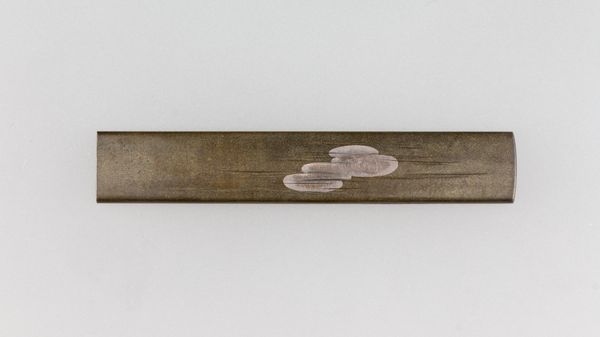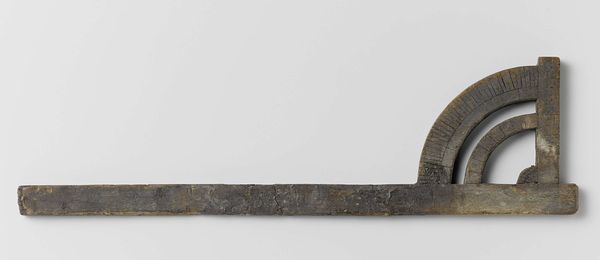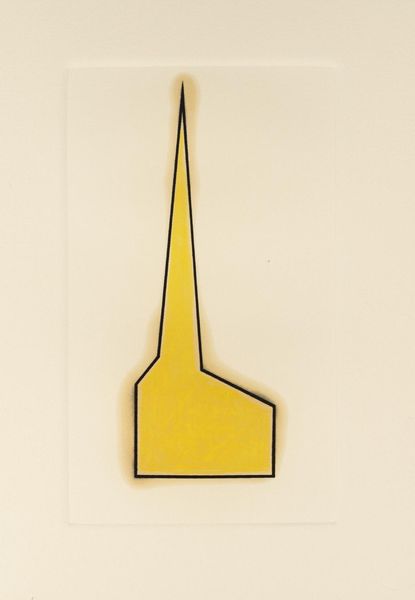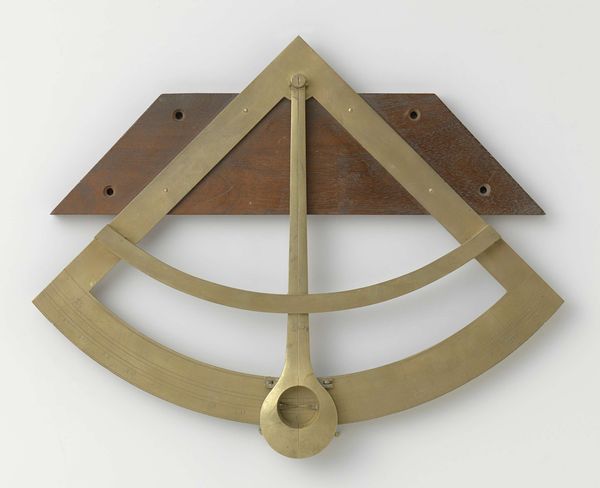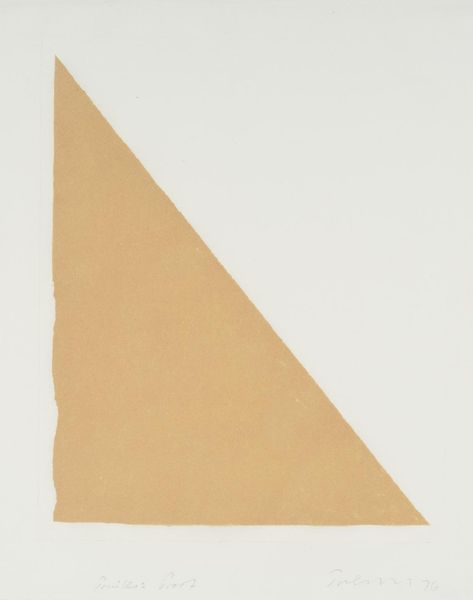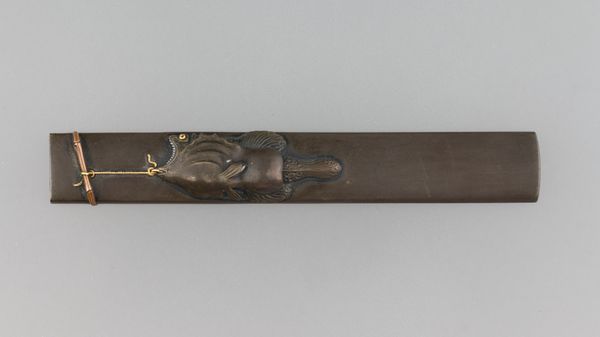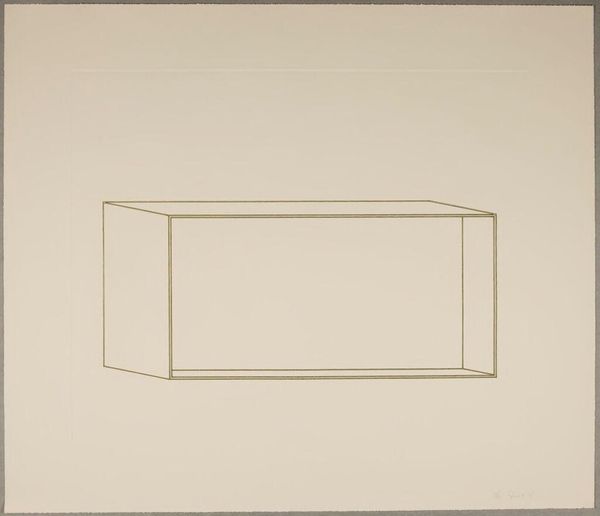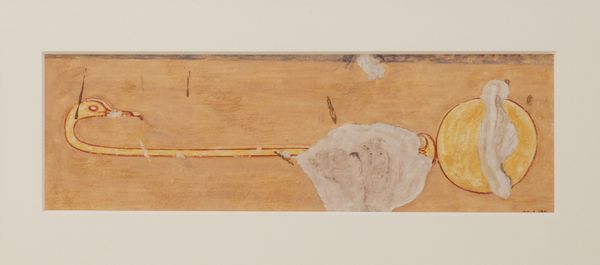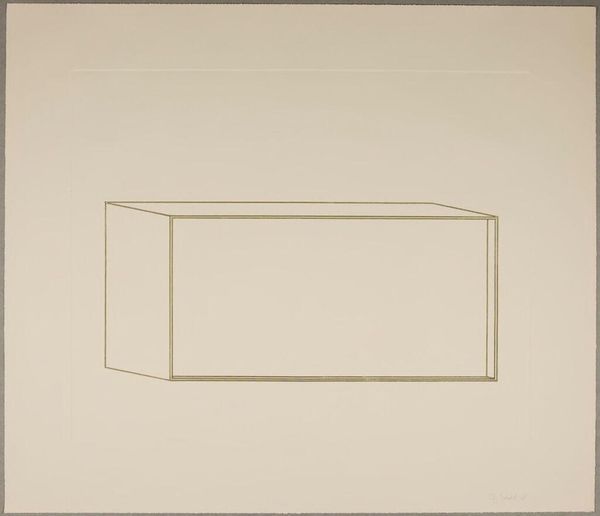
metal, bronze
#
precisionism
#
metal
#
bronze
#
geometric
#
ancient-mediterranean
Dimensions: height 3.6 cm, width 45.2 cm, depth 20 cm
Copyright: Rijks Museum: Open Domain
Curator: This bronze and metal instrument, known as “Quadrant,” dates from between 1793 and 1808. It was crafted by Jan Marten Kleman. What are your initial thoughts on the object? Editor: My first impression is one of calculated elegance. The interplay of straight edges and precise curves generates visual interest, while the use of polished bronze gives it a substantial weight, despite its apparently modest dimensions. Curator: Exactly, let’s consider the function driving the form. Quadrants like these were essential tools for navigation and astronomy, crucial for trade, exploration and the burgeoning scientific spirit of the late 18th century. Can you envision the society from which this emerged? Editor: Certainly, this isn’t mere decoration. It bespeaks a culture keenly focused on empirical observation, quantification, and prediction. Notice the engraved arcs; each one symbolizes a measure of something significant—latitude, time. They're physical representations of abstract ideas, really. Curator: I agree completely, and it invites us to consider how material and technology converge to form labor and global economy. Jan Marten Kleman, the creator, made an object reflecting how mathematics was critical to seafaring societies during this period. The instrument can allow to determine positions at sea which therefore allowed for travel and trade. Editor: The patina lends an air of authority, doesn't it? But in visual terms, that mellow warmth balances out what might have otherwise been a coldly geometric object. It turns a purely functional thing into a work of art, accidentally or otherwise. The composition relies on that contrast to work effectively. Curator: And those imperfections, from a manufacturing perspective? They are crucial parts of the process! Each groove, slight curve variation and uneven edge reflects not just its production, but the individual labor of the maker. I'm moved to realize how the hands, labor, and mind work for society, rather than thinking of art separate of practical work. Editor: True. Looking closely, that intricate detail reveals so much—the intentions of its creator, the very act of creation—captured permanently in the object's composition and structure. It allows viewers to understand the composition by recognizing intention. Curator: Understanding intention through labor—excellent perspective. Editor: Well, looking back, it has indeed prompted some fruitful avenues of inquiry regarding functional design, materiality, and artistic merit!
Comments
No comments
Be the first to comment and join the conversation on the ultimate creative platform.


